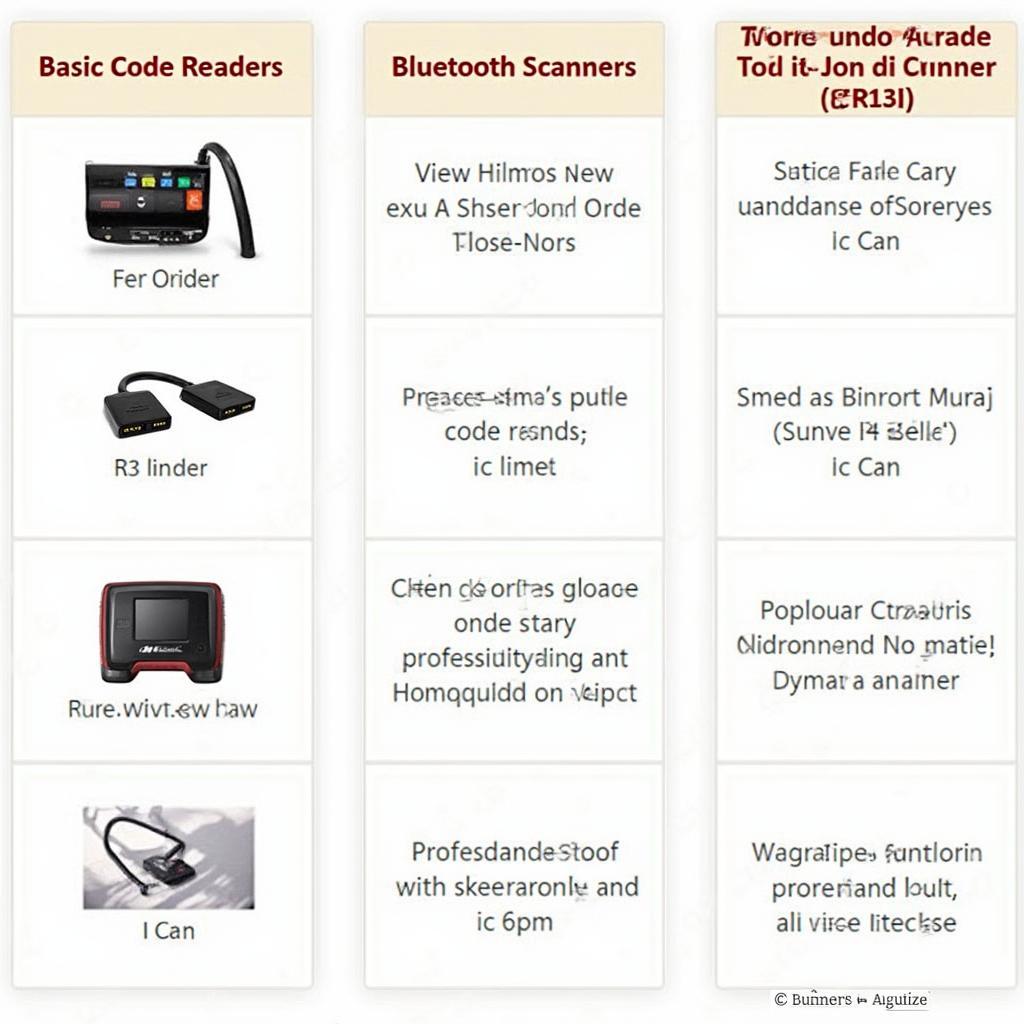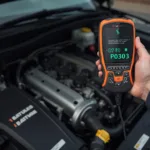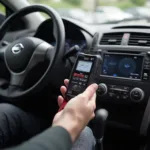An OBD2 scanner, often referred to as a car code reader, is an essential tool for car owners and mechanics alike. This guide dives deep into the world of OBD2 scanners, explaining how to use them effectively to diagnose and potentially fix car problems.
Understanding OBD2 Scanners and Their Importance
The acronym “OBD2” stands for On-Board Diagnostics, generation two. This technology, found in most vehicles manufactured after 1996, allows you to communicate with your car’s computer and access valuable information about its health and performance. An OBD2 scanner acts as the bridge between you and this computer.
But why is this important? Imagine this: Your “Check Engine” light flashes ominously. Instead of a frantic dash to the mechanic, an OBD2 scanner empowers you to identify the problem yourself. It’s like having a window into your car’s brain, allowing you to understand what’s triggering the warning light and whether it necessitates immediate attention or can wait.
Choosing the Right OBD2 Scanner for Your Needs
 Types of OBD2 Scanners
Types of OBD2 Scanners
Navigating the world of OBD2 scanners can feel like entering a maze. From basic code readers to advanced professional tools, the options seem endless.
Here’s a breakdown to simplify your decision:
- Basic OBD2 Code Readers: Ideal for beginners, these affordable scanners read and clear basic diagnostic trouble codes (DTCs).
- Bluetooth OBD2 Scanners: These wireless wonders connect to your smartphone or tablet, providing access to more detailed information and even real-time data through dedicated apps.
- Professional-Grade OBD2 Scanners: Used by mechanics and experienced DIY enthusiasts, these comprehensive scanners offer advanced features like live data streaming, bi-directional control, and special functions for specific vehicle makes and models.
The “best” scanner ultimately depends on your individual needs and budget. Consider what you want to achieve – from simply reading and clearing codes to performing complex diagnostics and programming.
How to Use an OBD2 Scanner: A Step-by-Step Guide
Using an OBD2 scanner might seem intimidating, but it’s surprisingly straightforward. Follow these steps, and you’ll be reading car codes like a pro:
- Locate Your Car’s OBD2 Port: Typically found beneath the driver’s side dashboard, the OBD2 port is a trapezoidal 16-pin connector.
- Turn the Ignition Off: Ensure your car is completely off before plugging in the scanner to avoid any electrical issues.
- Connect the OBD2 Scanner: Insert the scanner’s connector firmly into the OBD2 port.
- Turn the Ignition On: Turn the key to the “on” position without starting the engine. This powers up the scanner and allows it to communicate with your car’s computer.
- Read the Codes: Depending on your scanner, it will either automatically scan for codes or require you to initiate the process through a button or menu option.
- Interpret the Codes: Once the scan is complete, the scanner displays the DTCs. These codes, often alphanumeric (e.g., P0303), represent specific issues within your car’s systems. You can usually find detailed explanations of these codes in your scanner’s manual or online resources.
- Clear the Codes: After addressing the underlying issue indicated by the code, use your scanner’s “clear codes” function. This clears the code from the car’s memory and, if the problem is resolved, turns off the “Check Engine” light.
Taking Action Based on OBD2 Scanner Results
Remember, an OBD2 scanner is a diagnostic tool, not a magic wand. It helps you pinpoint problems but doesn’t fix them. The information provided by the scanner guides your next steps:
- Simple Fixes: Some codes might point to minor issues like a loose gas cap or a faulty sensor, which you can potentially fix yourself.
- Further Diagnosis: For more complex issues, the code provides a starting point for further investigation.
- Seeking Professional Help: In some cases, especially for serious problems, consulting a qualified mechanic is recommended.
Common OBD2 Scanner Questions
Q: Can I use any OBD2 scanner on my car?
A: While most OBD2 scanners work on vehicles manufactured after 1996, certain scanners offer enhanced features or specialized functions for specific makes and models.
Q: What is a “pending code”?
A: A pending code indicates an issue that hasn’t occurred consistently enough to trigger the “Check Engine” light.
Q: Why did my “Check Engine” light come back on after clearing the codes?
A: This suggests the underlying problem hasn’t been fully addressed. Further diagnosis is necessary.
Expanding Your OBD2 Knowledge
This guide provides a foundation for understanding and using OBD2 scanners. To further enhance your car maintenance expertise, explore resources like:
Remember, knowledge is power when it comes to car care. An OBD2 scanner, coupled with the right information, empowers you to take control of your vehicle’s health and make informed decisions about its maintenance.

